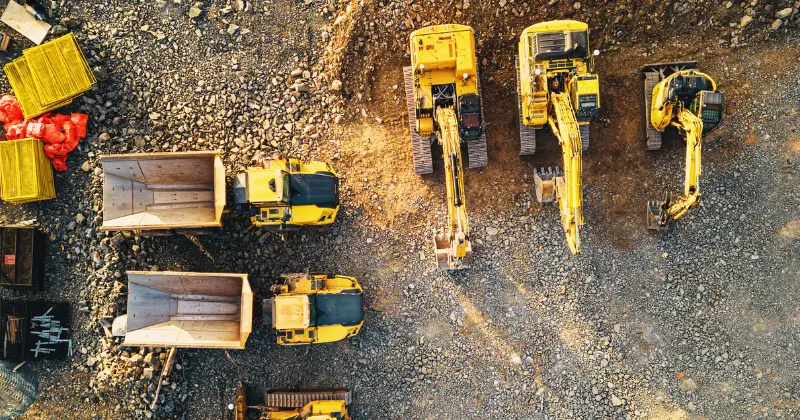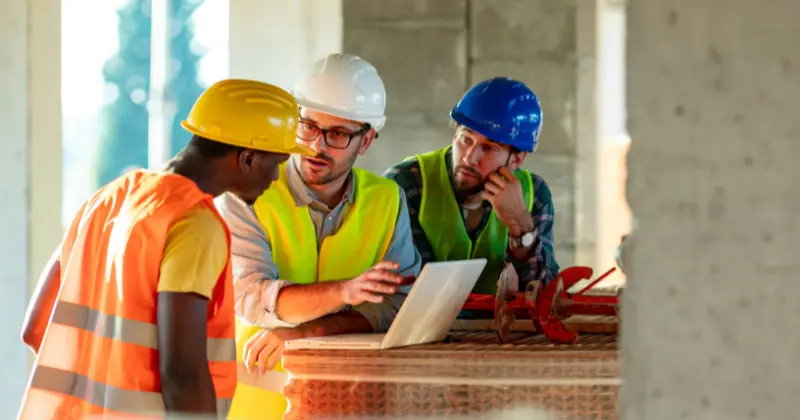11 mins read
The Importance of Site Surveys in Construction: Reviewing the Key Steps and Benefits

The foundation of a structure is often viewed as the first essential element since the long-term stability of the entire building depends upon this fundamental layer. Before the first shovel hits the ground, another essential step must be completed successfully: a detailed site survey. This process provides insights into the size, constraints, and quality of a location, making it possible to launch a successful project. This guide explores the topic in detail!
What is a Site Survey in Construction?
A site survey is a process used to gather essential information on a specific area prior to beginning a project or renovation. The physical condition, topography, and environmental conditions of the site are reviewed to identify any important issues and pitfalls.
Site surveying involves intensive data collection using tools like tripods, digital levels, and soil augers to gather information on the boundaries, surface profile, and soil quality of the site, along with other factors of interest. This review must be detailed and accurate enough to support subsequent design and planning processes or influence on-site purchases, zoning, and viability decisions. A site survey is also a type of risk assessment since it is used to identify construction hazards and obstacles.
Types of Site Surveys
Site surveys are performed for many different purposes. While some surveys are completed to support interior space remodeling or upgrades, others are performed to gather information on large, uncharted outdoor spaces. These different applications call for specialized types of site surveys.
- Urban construction surveys: These surveys evaluate spaces in densely populated areas, reviewing factors like neighboring infrastructure, utility access, traffic density, and drainage to decide if the location is suitable for a new building or structure and providing basic information for designers.
- As-built surveys: This type of construction site survey is used after work is completed to ensure the project output matches plans and construction specifications. The grading, infrastructure, and boundaries of the site are subject to final verification through the survey.
- Wireless network surveys: With millions of physical cell sites dotting the landscape, wireless network surveys help to identify optimal locations for new base stations and towers. Cell coverage properties, proximity to urban developments, and environmental conditions are primary considerations.
- Exploration surveys: This category includes geological surveys used to identify minerals and other resources both on land and at sea. These specialized surveys often utilize advanced technology like ground-penetrating radar (GPR) and terrain-mapping drones.
Components of the Site Survey Process

With so much variation in size and scope, site surveys can range from one—or two-day jobs with a small crew to months-long projects with multiple phases and specialists involved. No matter what type of survey is performed, a few basic steps should always be part of the process.
- Survey planning: The planning phase is when the purpose, scope, and schedule for the survey are established and documented. Research on the site can be completed before a physical visit to learn more about the history, surrounding environment, and elevation of the area.
- Site analysis: The analysis phase includes initial fieldwork to collect data on soil composition, drainage patterns, native wildlife, and other factors that may require further review and analysis to complete the site survey. At this stage, professionals use construction analytics software to gather and analyze data in real-time.
- Boundary definition: Traditional surveying and measurement methods are used to define property lines precisely so that the design and construction phases that follow do not encroach on neighboring developments or easements.
- Infrastructure review: Studying neighboring infrastructure is essential. Items like gas and sewer lines must be reviewed to assess the site’s viability for new builds. The physical condition of neighboring structures should also be evaluated.
- Reporting: Once all the information gathering and analysis are completed, the results should be written into a detailed report that can be presented to stakeholders, including construction architects, designers, contractors, and potential land buyers.
Importance of Site Survey in Construction
Site surveys serve many important purposes beyond establishing accurate property boundaries. Construction surveying is essential for designers and civil engineers who rely on accurate survey data to complete their grading plans, building layouts, and landscape designs. Geological information from the survey helps ensure structures and foundations can withstand disasters like earthquakes or hurricanes.
A well-executed survey improves construction risk management by uncovering potentially dangerous conditions and hazards, such as contaminated soil or underground utilities, early so they can be mitigated more easily. A thorough survey can also reduce environmental impact by identifying sensitive ecosystems and ensuring activities do not disrupt protected waterways or wildlife.
Top 7 Best Practices for Successful Construction Site Surveys

Site surveys vary in size and scope, but all feed into important decisions and outcomes with far-reaching impact. Following a few basic tips and best practices ensures survey results are as useful and accurate as possible.
Collect detailed data
A site survey may be the best (and only) opportunity to gather information from the location of interest, so you can never collect too much data. This includes supplementing basic perimeter and topography information with soil composition and moisture content data. This granular data helps to support BIM designs and test processes. Information collected on factors like accessibility, utility locations, climate, and local traffic patterns also helps to support follow-on decisions and designs.
Use proper technology
Digital construction technologies make surveys faster, easier, and more accurate with the development of tools like GPS mapping, drones, and total stations that accurately measure horizontal and vertical angles and distances. Small lots or interior surveys may not require advanced technology, but complex multi-acre surveys in remote or uncharted locations benefit from tools like GPR to review underground formations and drone mapping surveys to quickly gather aerial data.
Have the right expertise
A well-executed site survey combines data from various sources and tools to form a complete picture. Still, it is unlikely that any individual will have a depth of knowledge in all focus areas. The firm or consultant you hire should be well-versed in construction survey practices and regulations. Collaborating with experts in relevant fields like geology, seismic engineering, environmental science, and urban planning is important before, during, and after the survey.
Document everything
Data collected during the survey is of little value if it is not organized in a way that makes it easy to retrieve for reporting and compliance purposes. A complete set of records and documents makes it possible to maintain transparency between contractors, clients, and stakeholders regarding survey results while tracking any updates or changes that may impact the findings. These documents might include topographical maps, boundary and easement documents, environmental impact reports, and hand-written observations. Supporting yourself with professional construction document management software is fundamental to ensuring all documentation is saved and updated in a digital environment.
Ensure regulatory compliance
Sites should be checked against local building and environmental codes to ensure any proposed projects will be compliant with applicable laws. This includes verifying all necessary permits are in place, that minimum distances from roads and waterways (setback requirements) are established, and that property lines coincide with existing deeds and titles.
Create a site survey report
A site survey report should always be created once all analysis results are available. Standard report formats include an introduction section explaining the purpose and scope and describing the methodology used to perform measurements and collect data. Maps, charts, and photos within the results section help to emphasize key findings and provide visual evidence of the site’s condition. The report should be written in a format that stakeholders with varying knowledge levels can easily understand; following construction reporting best practices is fundamental for this goal.
Leverage professional construction software
Modern technology has improved the collaboration, data analysis, and reporting aspects of site surveying, with construction software helping to streamline this essential process. RIB CostX is an all-in-one estimating, quantity takeoff, and reporting solution that provides multiple deployment options and error-free results to support surveyors and estimators. Carbon accounting capabilities enable long-term cost and environmental impact to be determined based on real-time survey and project data.
Final Thoughts
Site surveys use advanced equipment and software to capture voluminous information from a select geographic area in a short period of time. With many important land buying, zoning, design, and environmental decisions relying on accurate survey results, there is no margin for error.
Construction software makes capturing, analyzing, and sharing important information in real-time easier while making records and reports accessible to all stakeholders. If you want to learn how BIM technology can transform how you design, construct, and manage projects, get your free demo for RIB CostX today!

Most Recent
11 mins read
10 mins read
10 mins read
29 mins read
Blog Categories

Ebook











